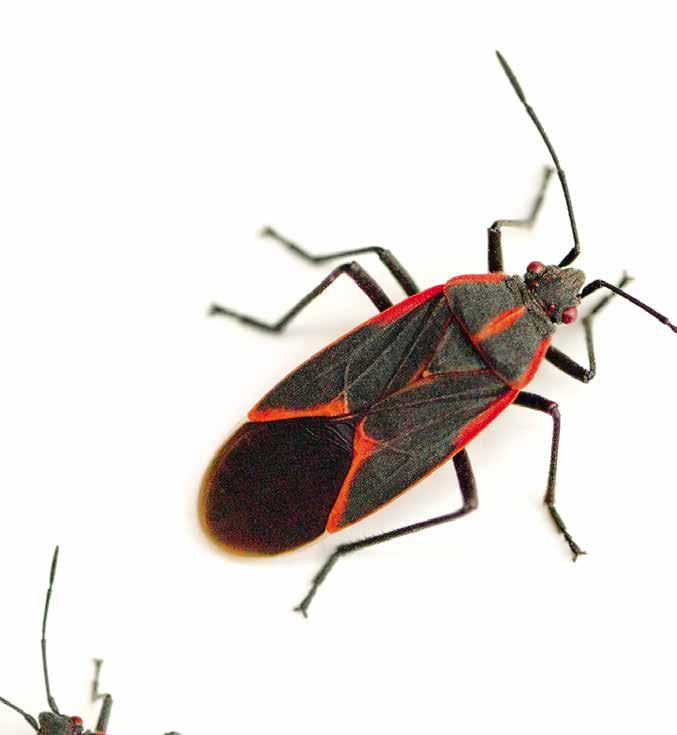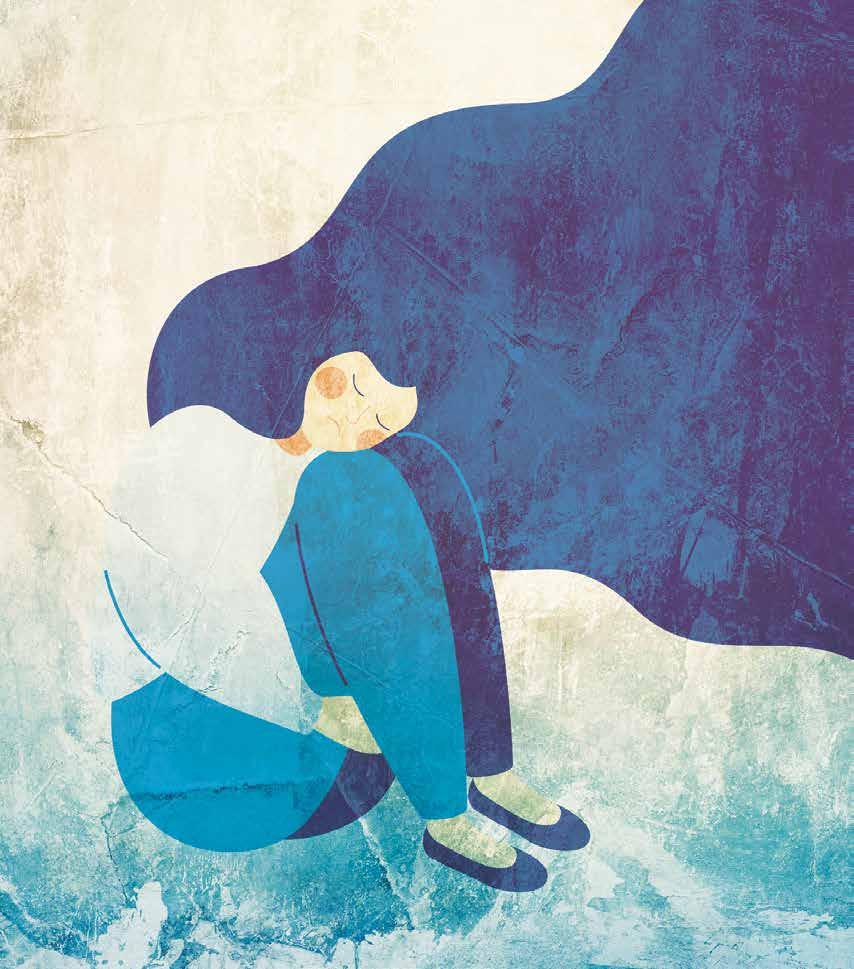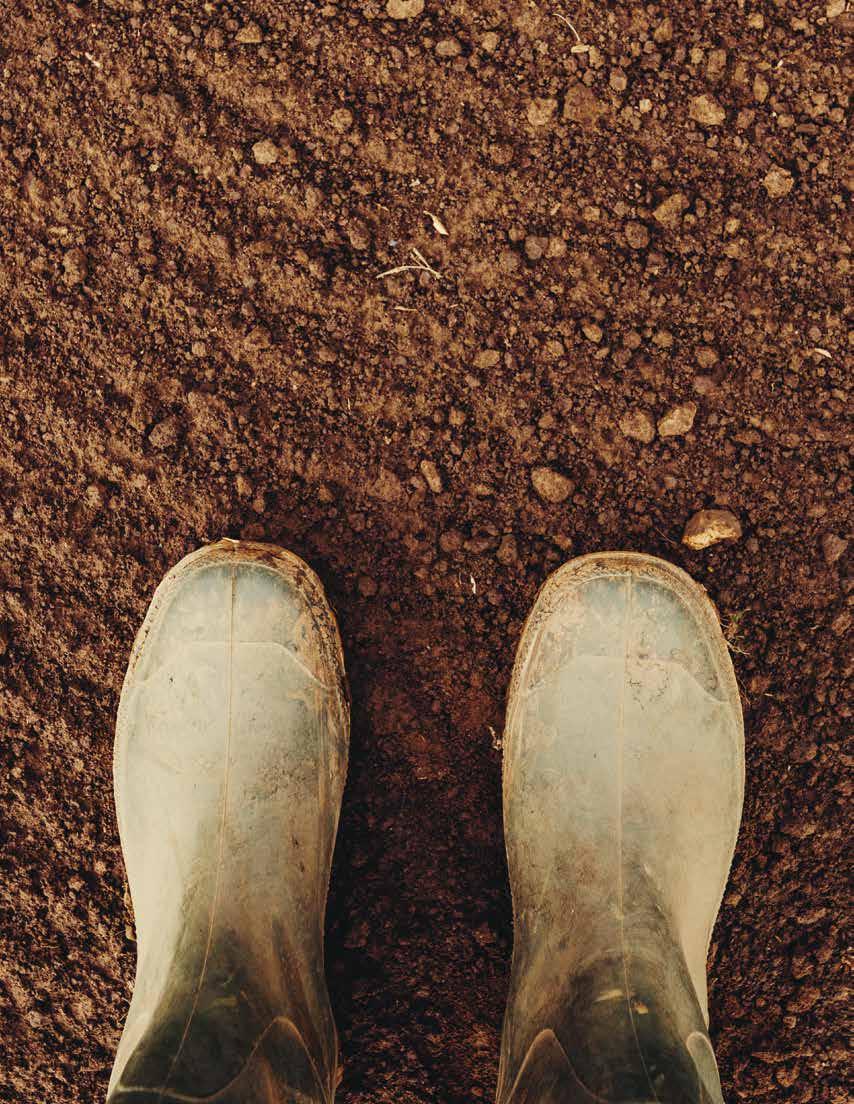
13 minute read
Hitched to Everything Else in the Universe: On Walking, Trees, and Grace
by ShaunAnne Tangney
A pretty cool thing has been happening in Melbourne, Australia, for the past six years. In 2013, as part of its Urban Forest Strategy, the city issued ID numbers and email addresses to all of its 77,000 trees. The original intent was to allow citizens to report on health issues or dangerous broken branches or vandalism to the trees. In general, it was a way for the city foresters to get a hand in doing a very big job—maintaining the trees of Australia’s second-largest city—and also an attempt to foster civic engagement, to encourage the people of Melbourne to become citizen foresters. What happened instead was nothing short of amazing.
Advertisement
People did report on the health of the trees, or problems they noticed. But they also used those ID numbers and email addresses to write letters directly to the trees—tree-mail, if you will. People wrote thousands and thousands of letters to trees—letters like this:
To: Golden Elm, Tree ID 1028612 29 January 2015
I used to think you were the Magic Faraway tree when I was a child.
Now that I’m an adult, I still look forward to seeing you as I come around the bend after a tedious crawl down Hoddle Street.
A loyal friend always there waiting to say hello. Your friends who are there for you are the most important ones.
The City of Melbourne’s website says that “the Citizen Forester Program [was] established to facilitate [an] ongoing and meaningful partnership with the community to grow and enhance one of Melbourne’s most important assets: our urban forest.” I think it’s great that Melbourne considers its trees one of its most important assets and is working hard to protect them. But the tree-mail project facilitated ongoing and meaningful partnerships on a level that probably no one involved in the Urban Forest Strategy saw coming. It seems the people of Melbourne don’t just value their trees; they love them—and they seem to be delighted to finally have a way to express their love.
This does not surprise me. Even though I suffer from pretty awful tree pollen allergies, feeling all spring like someone has embedded tiny ninja throwing stars in my nose, like someone has driven 16-penny nails into my sinuses, it is a joy and a relief to see our trees come back into leaf after another long and bitter North Dakota winter. It’s like we share something, these trees and I—a knowledge of something hard, something sad, something that clutches the soul…like surviving a war together, or a flood, or a terrible and untimely death. When the trees in my neighborhood begin to leaf and bud, I feel a lot like that tree-mail writer from Melbourne: glad to find old friends, loyal and true.
I’m especially fond of the massive cottonwood trees in my neighborhood. These cottonwoods strike me as kind trees, generous trees. But more than that, I’ve come to respect these cottonwoods as elders, beings who have lived here for a century or longer, and who know more about this neighborhood than I ever will. Perhaps this feeling comes from a flood memory—seeing a young couple sitting stunned on their front steps, taking a break from frantic packing up and moving out, the giant cottonwood in their yard reaching its arms around them, giving them shade and a moment of rest, and assuring them it would be here when they returned. As it was, as it is, giant and majestic to this day. Cottonwoods are resilient. One doesn’t become an elder if one is not resilient.
I am aware that I am guilty of anthropomorphizing—attributing non-human creatures with human characteristics or qualities. But I know as well that everything I said about that cottonwood tree is true. That tree did provide a moment of respite for that flood-defeated couple. And that tree is a wise and sentient neighborhood elder. It knows, in ways I could never know, what air smells like and what dirt feels like and what rain tastes like. It knows what it feels like to be under eight feet of water for forty days. It knows what it was like to grow up in a wide-open expanse, and what it is like to grow old, trapped in asphalt and concrete. It knows the deep history of the neighborhood. Before the flood, it watched four generations of children walk to school. Since the flood, it watches no children walk to school.
Other trees in the neighborhood are dear to me as well. My late husband’s ashes are buried under several trees in our neighborhood. Russ was born in this neighborhood, in a house two blocks from the one he died in. He, too, was a neighborhood elder, and walking these streets with him was a history lesson and a cultural archive, a revelation and a gift. Russ and I loved walking, and we walked almost every day that the weather allowed. Sometimes it was just a casual stroll after work, after dinner; sometimes—especially on Sundays—we’d go for two hours or more. There was something about a Sunday walk for us. It was a time to be together, but not alone, for we always paid careful attention to the world around us (one of my all-time favorite Russ stories: walking one spring day we heard a woodpecker hammering away; Russ stopped, looked until he found the bird high up on a half-dead ash tree, then shook his head and said, “Man, that’s a hell of a way to make a living…”). We said to one another on many a Sunday walk, the sun warm on our backs or the wind nipping our ears and noses, this is our church, and walking together, being together in the natural world, is our worship. It can be hard to be certain about things, but putting Russ to rest under those trees—I can think of no better headstone, no better burial ground.
When Russ and I walked together, we would talk and talk— about the quotidian: bitching about work, or bandmates, or politics—what needed to be done around the house—grocery lists and who needed a haircut. And about the big stuff, too—plans for travel, career decisions, family matters—all the things that crowded our hearts—joys like birdsong, sorrows like stones. We made perhaps the biggest decision we ever made together on a Sunday walk—and another ancient cottonwood was there to witness it.
Russ and I lived together for almost ten years before we got married. We had both been married before, had gone through painful divorces, had done the hard work of mending ourselves. Neither one of us was sure we wanted to marry again. We went back and forth for months, weighing the pros and cons, doing our best to be specific as to what married meant to each of us, what we wanted, and what we didn’t. And then there we were, out on a Sunday walk, passing under a towering cottonwood, and I just stopped and said, “Yes. OK, let’s do it. Let’s get married.” Russ beamed and took my hand. “Yeah,” he said “me, too. Let’s do it.” And so we did.
It may not have been a “romantic,” down-on-one-knee proposal, but it was a deeply profound moment, and decision. What Russ and I figured out, during all that walking and talking, and what we did in saying yes to one another underneath that cottonwood tree on that Sunday walk, was promise to take care of one another. This wasn’t an easy decision to make. Russ had said that he wasn’t sure if he was ready to be responsible for me. I got kind of pissed at that: I was a modern, independent woman with her own successful career, money in the bank, health insurance, life insurance, a stock portfolio; I didn’t need any man to be responsible for me. But that’s not what Russ meant. He was talking about responsibility of a much higher order: responsibility as the antithesis of selfishness. To say, if we get married, my life is not entirely my own anymore. Your happiness, sorrow, struggles, success, well-being, wealth, dreams and plans are going to matter to me as much as my own. It was something I didn’t grasp at first, but as he did so often in our time together, Russ helped me understand it, and then he helped me live it.
A tree as witness notwithstanding, you may wonder what our deciding to get married has to do with the Melbourne tree-mail project. Perhaps more than you think. That afternoon, Russ and I chose to take care of one another, to be responsible for one another. We didn’t choose to get married because we loved one another, even though we loved one another very much. We chose to get married because we believed we could provide for one another. In a way, getting married—coming together and promising to stay together— was kind of an outward move for us because it was a decision based not solely on our own individual needs and desires, but on the needs and desires of another person. The outward move is an old idea, as old as Plato who argued that we must move from eros, in which we are captured by a passionate desire for one person, to agape, or caritas, in which our compassion, kindness, and care is extended to all people. I would push that outward turn even further, saying we must extend our care to all living things. In that vein, the tree-mail project in Melbourne was an invitation to caritas. And a kind of a genius invitation because the natural world itself is a model for caritas.
We are wont to believe that only human beings can take on this kind of responsibility, can exhibit the kind of selfless love in which we are passionately committed to the well-being of others, but that is not really true. While it may appear “red in tooth and claw,” nature, the non-human, is actually quite communal and cooperative. Ants and bees come immediately to mind as examples of cooperation in the non-human world, but fish also cooperate (wrasse fish that clean parasites from the skins of other fish), birds cooperate (flycatchers that heed the calls of other flycatchers to mob a predator bird), plants and bacteria cooperate, too (exchanging chemical signals to distinguish friend from foe). In one way or another, most living things take care of one another, take responsibility for one another, whether it is the more common inter-species care, or the more unusual intra-species care.
And that is the really cool thing about the tree-mail project in Melbourne: it gave human beings the easy opportunity for intraspecies caritas. Like Russ and I deciding to get married, lots of human beings are willing to take care of and be responsible for one another. Similarly, towns and cities, schools and churches, clubs and organizations all demonstrate that human beings are willing to commit to the well-being of other human beings. But to take care of and be responsible for species other than our own? We are often not so willing.
We tend to think of “nature” as some big monolithic thing that is always somewhere else—like a national park or a South American jungle or an African savannah or a far-off ocean. Perhaps we do this because we also tend to think of “nature” as “not-me,” when really, we are all a part of it. We all belong to one another—all of us, all living things. There is a kind of basic, underlying principle about the universe: everything is connected to everything else. We are all connected—in the words of Robinson Jeffers: “earth, stone and water, / Beast, man and woman, sun, moon and stars”—and all of our actions have distinct consequences for and on one another.
I think most of us can grasp this interconnectedness intellectually, but because we mostly think of “nature” as both “not me,” and far away from me, we are not very likely to act on that intellectual conception. The Melbourne tree-mail project, which focuses on the “nature” that is right outside people’s doors, right where they live and work and play, helped people understand that we—all living things—really are all connected, and therefore really are responsible for one another.
I visit the trees beneath which Russ’s ashes are buried often. I like that he’s still here, in the neighborhood, that he is still a part of everything that goes on here. But the other day, I made a sojourn to the cottonwood where we decided to marry. It was a bittersweet afternoon, not just in missing Russ, gone more than two years now, but because I fear that tree will come down in the name of flood protection. If that happens, it will be another terrible loss for me, but it will be a loss for the neighborhood, too; indeed, a loss for the entire community. The loss of an elder is always a blow to the community.
The loss of an elder is not just a loss of knowledge and history, but is also a loss of caritas. Elders are elders not just because they are old and wise but also because they take their responsibility to their community seriously. Everything they know and have and are, they make freely available to everyone in their community. And they refuse no request. This cottonwood is no less an elder than any human being. And it will refuse no request we make of it, even if we ask it for its life.
There is a hard truth to living on this planet. Wendell Berry puts it this way: “to use or not to use nature is not a choice that is available to us; we can live only at the expense of other lives.” The best I know to do in the face of that hard truth is to say grace. To be humble and grateful in the face of such generosity and responsibility and care. I could stand at the base of that cottonwood and offer it my words (not unlike sending a tree-mail):
Thank you for the exchange of oxygen and carbon dioxide that allows me to live on this planet. Thank you for the beauty you share so freely—deep shady greens in summer, golden glowing yellows in autumn. Thank you for witnessing the best decision I ever made. Thank you for your care, for taking responsibility for me, even past your death, your removal so that I may stay, here in the neighborhood.
And while that one-time act of grace may well be necessary, I think what is truly required are ongoing acts of grace, saying grace every day we walk on this planet.
And the grace we can offer is so simple: pay attention. At root, that’s what the city foresters of Melbourne asked of their fellow citizens: pay attention. You live in a magnificent urban forest that you could lose. You live amongst an amazing multitude of living things who care for you and provide for you. They deserve your attention. And when we pay attention—when we extend our awareness and care outward to other living things—we become less selfish, become more generous, more responsible. When we pay attention, we become brave—brave enough to love, to give our hearts, which means being brave enough for joy, brave enough for despair.
Which is, in the end, all we ever want.
Go. Take a walk. Pay attention. Say grace. You’ll see.
SHAUNANNE TANGNEY has lived in North Dakota for nearly twenty-five years. She was an English professor at Minot State University for twenty years where her scholarly work and teaching focused on literature of the US west, sense of place, and critical theory. She is an essayist and poet whose work has been published in the US, Great Britain, and Australia; her most recent work features spoken-word essays for the Good Talk Network and late-night comedy for Good Night Minot.










